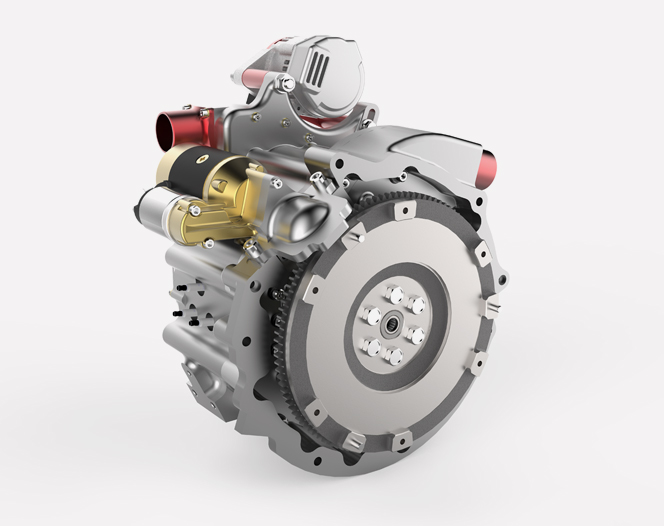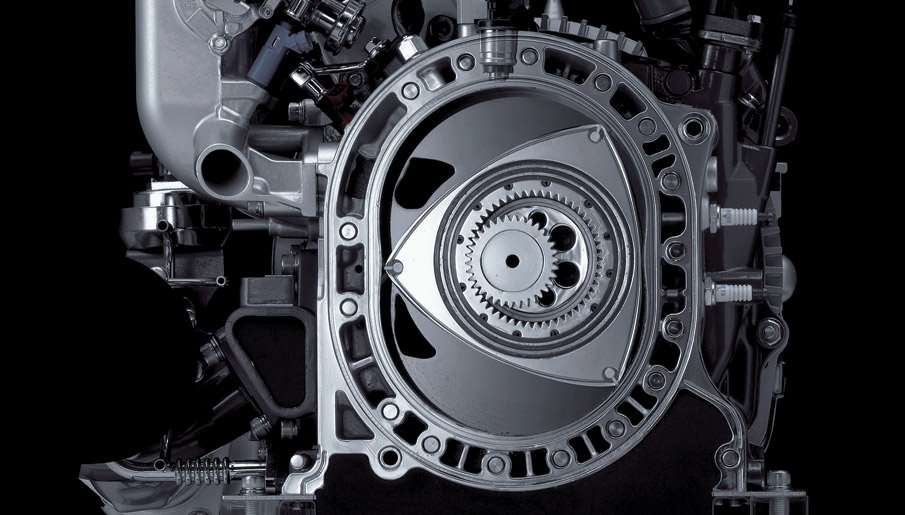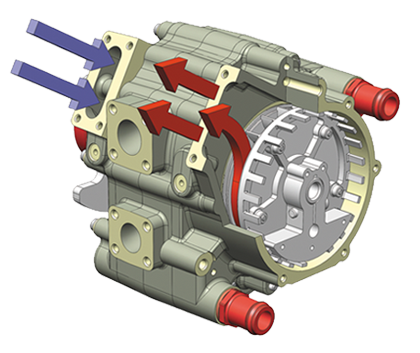Wankel Rotary Engines – I believe there are different types of Wankel rotary engines around. What are the differences and which is the best?

Yes. As is the case with piston reciprocating engines there are several “types” or variants of the Wankel rotary. Again as with piston engines, the core principle of the rotary engine remains the same in all cases, and it is just the configuration of the engine interfaces, cooling systems and port configuration that change.
The most prominent difference between engines tends to be the external cooling system of the engine. As with reciprocating engines, Wankels can either utilise air or liquid cooling as the primary means of thermal management.
Unlike reciprocating engines though, a Wankel engine also needs a secondary form of cooling specifically for the engine rotor. The choice of rotor cooling system is more complex to categorise than external cooling but here goes:

- The original rotary engines utilise oil cooling for the rotor as Mazda also did in its recent RX8 car. Oil cooling is effective and well proven and follows more conventional automotive thinking (with a plain bearing crank), but is also quite complex with regards to the sealing of the rotor. This system also introduces an element of “drag” onto the rotor as the oil tumbles inside it as well as increases engine friction due to the extra sliding surface contact required for oil seals, reducing overall engine efficiency.
- After oil cooling probably the most common way of cooling the rotor in Wankel engines is “Charge Cooling” which utilises the engines induction air to cool the rotor before being consumed in combustion (this is not too dissimilar to the crack scavage two stoke system). The plus sides of this system are that it is simple and has low friction, but the downsides are that it uses a lot of oil (like a two-stroke) and also by heating the induction air, reduces the engines overall power.
- The third rotor cooling system is a UK development pioneered by David Garside and Norton motorcycles in the 80s. This system takes advantage of charge cooling (simplicity, low friction) and removes the power loss due to heating up the induction air, by simply blowing ambient air directly through the engine rotor disconnecting it completely from the engine intake system. The engine now inducts cooler ambient air allowing it to produce more power, and the rotor cooling can be varied depending on application by using the different forced air system. The downside to this system is that by opening up the core of the engine, and therefore, the rotating and sliding surfaces to transitory cooling air, you in effect strip the lubricating oil out of the engine core and eject it to the atmosphere with the waste cooling air. This oil loss means you have to inject a lot of additional oil into the engine to ensure everything remains well lubricated. The cooling system waste air/oil mist also makes the engines a little messy in operation, restricting their possible applications.
- The final and most recent rotor cooling system developed for rotary engines, however, is the “SPARCS” or “Self-Pressurising-Air Rotor Cooling System” developed by AIE and conceived again by David Garside (CREL Ltd), the original inspiration behind Norton’s rotary motorcycle engine technology as discussed above.
SPARCS is potentially the biggest leap forward in rotary cooling technology in some 30 to 40 years and real game changer for rotary engines in a wide range of applications.
The SPARCS system utilises the power, simplicity and low friction benefits of Norton’s air-cooled rotor technology and eliminates the negatives by making the system closed loop.

Sparcs
AIE patented SPARCS (Self-Pressurising-Air Rotor Cooling System) is rewriting the rules in rotary engine design with the advanced ability to utilise pressurised gases from the combustion process as a medium for cooling. By means of an external heat exchanger to deliver superior heat rejection and a completely sealed engine core, SPARCS provides AIE Wankel rotary engines with longer endurance and zero oil loss for increased performance.
By making the system closed loop you :
- Stop all the wet oil ejection, making the engine cleaner and easier to package.
- Reduce oil consumption dramatically as oil is no longer ejected from the engine core, but is instead recirculated with the cooling gas within the engine core.
- Gain thermal control of the rotor allowing you to provide sufficient cooling at higher power while making sure the engine is not overcooled at low power
In SPARCS, instead of ambient gas, the system utilises blow-by gas from the combustion process (which has escaped into the interior of the engine’s core via the rotor’s side seals) as a cooling medium. This pressurised air-gas mixture is recirculated in a completely closed loop circuit by an internal fan which is driven by the main shaft. As it recirculates, the air-gas mixture passes through the engine’s rotor where it picks up the heat before then being ducted through an external heat exchanger to reject the heat.
The real key to the system is that the high density of the pressurised air-gas mixture enables higher levels of heat removal from the engine’s rotor than through standard air cooling methods.
So in summary, AIE’s SPARCS system delivers a cleaner, simpler more efficient engine, ideal for any application requiring a small, power dense power unit with low vibration.
To find out more about AIE’s SPARCS Cooling technology, please have a look at AIE’s webpage http://www.aieuk.com/sparcs/
This article is part of a question and answer series which can be found at: Ten inaccurate preconceptions about Wankel rotary engines discussed.



